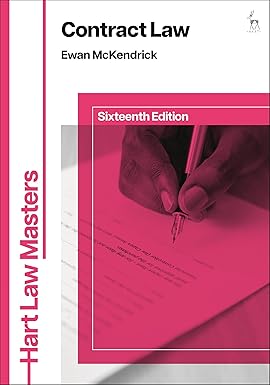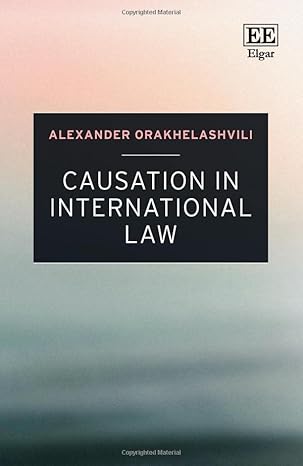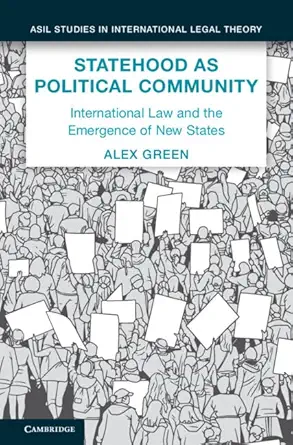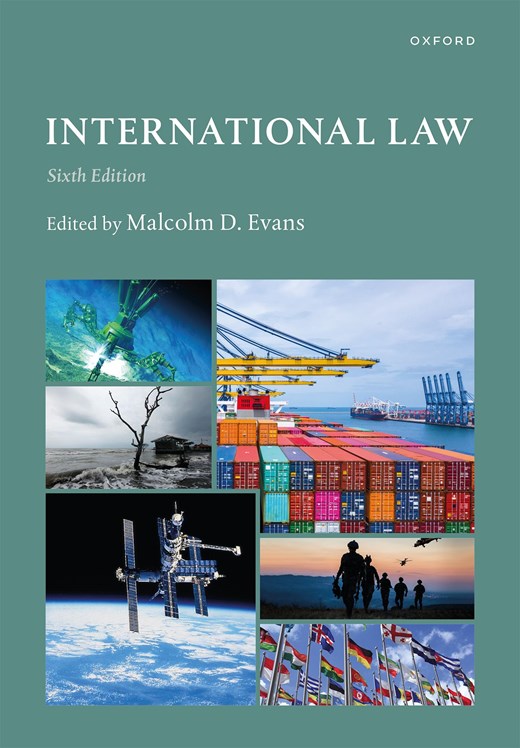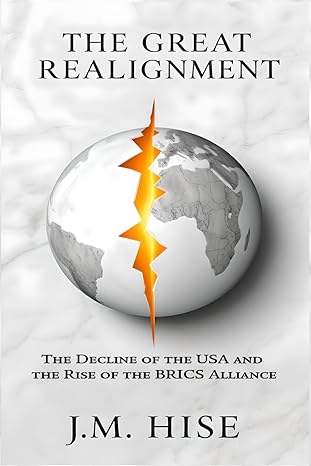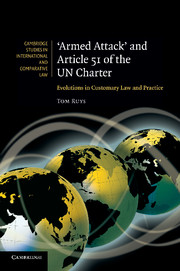Written by a former federal prosecutor and public defender, Criminal Law and Procedure: A Courtroom Approach introduces students to the essentials of criminal law and procedure by illuminating the legal issues justice professionals face before, during, and after a criminal trial. Through the examination of statutes, edited case excerpts, and recent constitutional interpretation of black letter law, the text bridges the gap between learning criminal procedure and applying criminal law.
Drawing from author Stephanie A. Jirard’s vast experience in both the courtroom and the classroom, Criminal Law and Procedure gets students to think critically about real-world issues and practice applying the law in a just and meaningful way. Accessible and engaging, this text presents criminal law and procedure as an exciting opportunity to have a direct, positive impact on our communities and the criminal justice system.
چکیده فارسی
نوشته شده توسط یک دادستان فدرال و مدافع عمومی، قانون و آیین دادرسی کیفری: رویکرد دادگاه با روشن کردن مسائل حقوقی که متخصصان دادگستری قبل، در طول، با آن روبرو هستند، دانشجویان را با اصول قانون و آیین دادرسی آشنا میکند. و پس از محاکمه جنایی. این متن از طریق بررسی قوانین، گزیدههای پرونده ویرایش شده و تفسیر قانون اساسی اخیر از قانون حروف سیاه، شکاف بین یادگیری آیین دادرسی کیفری و به کارگیری قوانین کیفری را پر میکند.
حقوق کیفری و آیین دادرسی برگرفته از تجربه گسترده نویسنده استفانی ای. این متن در دسترس و جذاب، قوانین و آیین دادرسی کیفری را به عنوان فرصتی هیجان انگیز برای تأثیر مستقیم و مثبت بر جوامع ما و سیستم عدالت کیفری ارائه می دهد.
ادامه ...
بستن ...
Ebook details:
عنوان: Amazon.com
نویسنده: Criminal Law and Procedure
ناشر: SAGE Publications, Inc; First edition (January 22, 2019)
زبان: English
شابک: 1544327501, 978-1544327501
حجم: 13 Mb
فرمت: Epub + Converted pdf
ادامه ...
بستن ...
Preface
Acknowledgments
About the Author
PART I • THE BASICS: HOW THE LAW WORKS
CHAPTER 1 • Introduction to the Law
Learning Objectives
Sources of Criminal Law
Law Is Written to Be Stable but Is Interpreted to Be Flexible
American Legal History
Judicial Review
The Bill of Rights
Interpreting the U.S. Constitution
The Sources of Law
How to Read Statutes and Case Briefs
The Geography of Legal Cases
Due Process
Objectively Reasonable
The Reasonable Man
Totality of the Circumstances
Good Faith
Error
Quantum of Evidence Required at Various Stages of the Trial Process
The Actors in the Criminal Justice System
The Victim
The Offender
➡ United States v. Brewer, 978 F.Supp.2d 710 (W.D. Tex. 2013)
Specialty Courts
Defense Counsel
The Judge
➡ Applying the Law to the Facts: Should the Judge Recuse (Remove) Himself?
The Prosecutor
Law Enforcement
Protecting Citizens and Criminal Justice Professionals
Government Actions Performed Under the “Color of Law”
The §1983 Claim
Immunity for Criminal Justice Professionals in §1983 Claims
➡ District of Columbia v. Wesby, 138 S.Ct. 577 (2018)
Federalism and States’ Rights
Federal Preemption of State Law
The Tenth Amendment and States’ Rights
➡ Murphy v. National Collegiate Athletic Association, 584 U.S. ___ (2018)
Federal Jurisdiction and the Commerce Clause
➡ Gonzales v. Raich, 125 S.Ct. 2195 (2005)
Summary
Key Terms and Phrases
Problem-Solving Exercises
CHAPTER 2 • THE CRIMINAL TRIAL PROCESS
Learning Objectives
➡ Chapter-Opening Case Study: United States v. Dzhokhar Tsarnaev
Pretrial Identification Procedures
Eyewitness Identification
Photo Arrays, Line-Ups, and Show-Ups
The Line-Up and Right to Counsel
The Adversary System
Prosecutorial Discretion and the Death-Penalty Decision
Discovery
➡ Applying the Law to the Facts: Is It a Brady Violation?
The Arrest and Charging Process
The Grand Jury
Bail and the Preliminary Hearing
Speedy Trial
Pretrial Motions
➡ United States of America v. Dzhokhar Tsarnaev, No. 13-cr-10200-GAO
Venue
Plea Bargaining
Types of Pleas
The Plea Colloquy
Trial
The Presumption of Innocence and the Burden of Proof
The Criminal Trial Sequence
Jury Selection
Voir Dire
➡ Applying the Law to the Facts: Improper Use of Peremptory Challenges?
Opening Statements
The Presentation of Evidence
Direct and Circumstantial Evidence
Physical Evidence
Testimonial Evidence
➡ Applying the Law to the Facts: Does Terrorist Radicalization Expert Testimony Meet the Daubert Standard?
Demonstrative Evidence
Hearsay and the Defendant’s Confession
Closing Arguments
The Jury
Charge Conference
Jury Instructions
Deliberations and the Verdict
How a Case Gets to the U.s. Supreme Court
Federal or Federal Constitutional Issue Required
Summary
Key Terms and Phrases
Problem-Solving Exercises
CHAPTER 3 • CRIMINAL LAW BASICS
Learning Objectives
➡ Chapter-Opening Case Study: Hurricane Michael, October 2018
➡ Mens Rea: The Guilty Mind
Mens Rea and the Model Penal Code
Purposely
Knowingly
Recklessly
Negligently
Laws That Criminalize Behavior and Identify More Than One Mens Rea State
Intent
Specific and General Intent
➡ Elonis v. United States, 135 S.Ct. 2001 (2015)
The Scienter Requirement
Strict Liability
Transferred Intent
Element Analysis
Principle of Legality
➡ Actus Reus: The Guilty Act
Actus Reus Must Be Voluntary
The Duty to Act and Liability for Acts by Omission
Good Samaritan Laws
Possession as an Act
Status as an Act
Causation
Causation Analysis
➡ New Jersey v. Pelham, 824 A.2d 1082 (N.J. 2003)
Parties to Crime
Principals and Accessories
Inchoate Crimes
Solicitation
Conspiracy
Limitations on Parties to Conspiracy
Attempt
➡ Applying the Law to the Facts: Is It Preparation or Criminal Attempt?
➡ Indiana v. Haines, 545 N.E.2d 834 (1989)
The Defense of Impossibility
➡ Applying the Law to the Facts: Guilty of Attempted Murder?
Summary
Key Terms and Phrases
Problem-Solving Exercises
PART II • THE CRIMES: CRIMINAL LAW ELEMENTS
CHAPTER 4 • CRIMES AGAINST THE PERSON
Learning Objectives
➡ Chapter-Opening Case Study: Ben, Jerry, and Kathy Go on a Crime Spree
Crimes Against the Person
Assault and Battery
Aggravated Assault and Battery
Terroristic Threats
Kidnapping and False Imprisonment
➡ Applying the Law to the Facts: Is It Kidnapping or False Imprisonment?
➡ United States v. Lussier, 844 F.3d 1019 (8th Cir. 2017)
Parental Kidnapping
AMBER Alert
Stalking
Cyberstalking and Cyberbullying
➡ People v. Marquan M., 19 N.E.3d 480 (N.Y. 2014)
Laws Against “Revenge Porn”
Hate Crimes
Sex Offenses
Rape
Sexual Assault and College Campus Disciplinary Proceedings
Rape Shield Laws
Statutory Rape
Child Sex Abuse
Deviate Sexual Conduct
Juveniles and “Sexting” Offenses
Homicide
First- and Second-Degree Murder
Manslaughter
Heat of Passion
➡ People v. Viramontes, 20 N.E.3d 25 (2014)
Felony Murder
Robbery
➡ State v. Williams, 95 A.3d 721 (2014)
Summary
Key Terms and Phrases
Problem-Solving Exercises
CHAPTER 5 • CRIMES AGAINST PROPERTY
Learning Objectives
➡ Chapter-Opening Case Study: The Family Toy Company
Theft Crimes
Larceny
➡ New York v. Alamo, 315 N.E.2d 446 (1974)
False Pretenses
➡ Applying the Law to the Facts: Voluntary Transfer of Money or False Pretenses?
Embezzlement
Forgery and Passing Bad Checks
Counterfeiting
Receiving Stolen Property
Extortion
➡ Applying the Law to the Facts: Is It Extortion?
Financial Cybercrime
The Dark Web, Cryptocurrency, and the Market for Illicit Goods
Identity Theft
➡ Applying the Law to the Facts: Is It Identity Theft?
➡ EarthLink, Inc. v. Carmack, 2003 U.S. Dist. LEXIS 9963 (N.D. Ga. May 7, 2003)
Consolidated Theft Statutes
White-Collar Crime
Mail and Wire Fraud
➡ United States v. Weaver, 860 F.3d 90 (2017)
Prosecuting Public Corruption With Mail and Wire Fraud Statutes
Money Laundering
Racketeer Influenced and Corrupt Organizations (RICO) Act
The Statute
Burglary
➡ Murphy v. State, 108 So.3d 531 (2012)
➡ Applying the Law to the Facts: Is It Burglary?
Arson
Criminal Mischief
Summary
Key Terms and Phrases
Problem-Solving Exercises
CHAPTER 6 • CRIMES AGAINST THE PUBLIC
Learning Objectives
➡ Chapter-Opening Case Study: Don Is Looking for an Easy Way Out
Crimes Against the Public
Gambling
Prostitution
Human Trafficking
Drug and Alcohol Offenses
Illegal Drugs
➡ United States v. Ulbricht, 858 F.3d 71 (2nd Cir. 2017)
Alcohol Offenses
Firearm Offenses
➡ Applying the Law to the Facts: Does the Second Amendment Trump Federal or State Gun Regulations?
Breach of the Peace
Vagrancy and Panhandling
Disorderly Conduct and Riot
Gangs
Crimes That Interfere With Government Services
Bribery
➡ Applying the Law to the Facts: Is It Bribery?
Obstruction of Justice, Perjury, and False Statements
Environmental Crimes
Computer Crimes
Computer Fraud Crimes
➡ Applying the Law to the Facts: Is a Cell Phone a “Computer” as Defined by Federal Law?
Nonfinancial Cybercrime
Social Media and Personal Victimization
Malware and Disruption of Public Services
Terrorism
The USA PATRIOT Act
The PATRIOT Act at Work
Aiding and Abetting the Islamic State of Iraq and the Levant (ISIL)
➡ United States v. Bell, 81 F.Supp.3d 1301 (M.D. FL 2015)
Detention of Terror Suspects
Treason
Sedition
Summary
Key Terms and Phrases
Problem-Solving Exercises
PART III • THE PROCEDURE: THE BILL OF RIGHTS
CHAPTER 7 • THE FOURTH AMENDMENT AND WARRANTS
Learning Objectives
➡ Chapter-Opening Case Study: Charlie the Spy
The Fourth Amendment
How to Analyze the Fourth Amendment
The Expectation of Privacy
➡ Katz v. United States, 389 U.S. 347 (1967)
The Fourth Amendment and Modern Technology
➡ Riley v. California, 134 S.Ct. 2473 (2014)
➡ Applying the Law to the Facts: Reasonable Expectation of Privacy in a Car’s Black Box?
Seizures of the Person
The Terry Stop
Duration of a Terry Stop
Requests for Identification
Terry Stops of Automobiles
The Intersection of the Terry Stop and the Suspect’s Race
The Arrest
The Arrest as a Fourth Amendment Seizure
Arrest Warrants
The Warrant Requirement
The Procedure to Obtain a Warrant
Probable Cause
Sources of Probable Cause
Supported by Oath or Affirmation
The Neutral and Detached Magistrate
The Particularity Requirement
The Service of the Warrant
Knock and Announce Requirement
Securing the Scene
➡ Applying the Law to the Facts: Is the Detention While Executing a Warrant Lawful?
The Return
Scope of the Search
Summary
Key Terms and Phrases
Problem-Solving Exercises
CHAPTER 8 • EXCEPTIONS TO THE WARRANT REQUIREMENT
Learning Objectives
➡ Chapter-Opening Case Study: Activity at the Apartment Complex
Warrantless Searches and Seizures
Consent
Submission to Authority Is Not Consent
Consent to Search Given by a Co-Occupant
No Consent Required to Search Those on Probation or Parole
Search Incident to an Arrest (SITA)
Automobile Searches
Probable Cause to Search Vehicle
Vehicle Search Incident to an Arrest
Inventory Search
➡ Applying the Law to the Facts: Is the Search Legal?
Warrantless Search of Closed Containers
Dog Sniffs
Common Enterprise
Driving Checkpoints
Protective Sweep
➡ Maryland v. Buie, 494 U.S. 325 (1990)
Plain View/Open Fields
Plain Feel
➡ Minnesota v. Dickerson, 508 U.S. 366 (1993)
Hot Pursuit
Exigent Circumstances
➡ Applying the Law to the Facts: When Can the Government Collect DNA?
Special Needs Searches
Drug Testing in Schools
Drug Testing of Government Employees
➡ Applying the Law to the Facts: Reasonable Search on School Grounds?
Airports/Subways/Buses
Border Searches
➡ United States v. Cotterman, 709 F.3d 952 (9th Cir. 2013)
The Exclusionary Rule and the Good Faith Exception
Mistakes About the Law Supporting an Arrest
Mistakes in Whether Probable Cause Exists to Arrest
Mistakes in Computer Databases Leading to an Arrest
Summary
Key Terms and Phrases
Problem-Solving Exercises
CHAPTER 9 • THE FIFTH AMENDMENT AND CONFESSIONS
Learning Objectives
➡ Chapter-Opening Case Study: The Story of Al and Mike
The Evolution of Miranda Warnings
Interrogation Techniques
Voluntariness
The Inbau and Reid Nine Steps of Interrogation
The Miranda Decision
➡ Miranda v. Arizona, 384 U.S. 436 (1966)
The Miranda Warnings and When to Advise
➡ Florida v. Powell, 559 U.S. 50 (2010)
Custody
➡ Howes v. Field, 565 U.S. 499 (2012)
Interrogation
Juveniles and Miranda
Trickery and Deceit in Interrogations
Invoking the Rights Pursuant to Miranda
Invoking the Right to Remain Silent
Reinterrogation After Invoking the Right to Remain Silent
Reinterrogation After Invoking the Right to a Lawyer
Invoking the Right to Have Counsel Present During Questioning
Waiving the Rights Pursuant to Miranda
➡ Applying the Law to the Facts: Can Police Conduct Negate a Miranda Waiver?
➡ Missouri v. Seibert, 542 U.S. 600 (2004)
Exceptions to the Giving of Miranda Warnings
When Miranda is Violated
Physical Evidence Remains Admissible
➡ United States v. Patane, 542 U.S. 630 (2004)
Inevitable Discovery
Independent Source
Collateral Uses of Excluded Evidence
Summary
Key Terms and Phrases
Problem-Solving Exercises
CHAPTER 10 • THE SIXTH AMENDMENT: COUNSEL AND TRIAL RIGHTS
Learning Objectives
➡ Chapter-Opening Case Study: Gary Needs a Lawyer
The Sixth Amendment as Due Process Protection
The Sixth Amendment Protects All Other Rights Associated With Fair and Equitable Justice
The Constitutional Requirements to the Assistance of Counsel at Trial
➡ Powell v. Alabama, 287 U.S. 45 (1932)
Government Appointment of Counsel
Invoking the Right to Counsel
The Sixth Amendment Prevents “Deliberate Elicitation” of Incriminating Statements
Invoking and Waiving the Right to Counsel
➡ Montejo v. Louisiana, 556 U.S. 778 (2009)
The Criminal Case
Venue
➡ Missouri v. Baumruk, 85 S.W.3d 644 (2002)
➡ Applying the Law to the Facts: Should the Venue Be Changed?
The Right to Control the Criminal Case
The Right to Self-Represent at Trial
The Right to Assert Innocence at Trial
➡ McCoy v. Louisiana, 584 U.S. ___ (2018)
Ineffective Assistance of Counsel
The Sixth Amendment’s Confrontation Clause
The Right to Appointed Counsel on Appeal
Summary
Key Terms and Phrases
Problem-Solving Exercises
PART IV • THE PERSONAL: OFFENDER-SPECIFIC PUNISHMENT
CHAPTER 11 • THE FIRST AMENDMENT AND CRIMINAL LAW
Learning Objectives
➡ Chapter-Opening Case Study: “Unite the Right” Rally, Charlottesville, Virginia, August 11–12, 2017
Protected Speech
How to Analyze the First Amendment
Content-Based Regulation of Speech
➡ United States v. Alvarez, 132 S.Ct. 2537 (2012)
Time, Manner, and Place Restrictions
Vagueness
Expressive Conduct
Flag Desecration
Cross Burning
➡ Virginia v. Black, 538 U.S. 343 (2003)
Unprotected Speech
Fighting Words
Clear and Present Danger
Obscenity
Overbroad Doctrine
➡ Ashcroft v. Free Speech Coalition, 535 U.S. 234 (2002)
➡ Applying the Law to the Facts: Is the Law Overbroad?
Post-Ashcroft Developments to Regulate Child Pornography
Special First Amendment Issues
Juveniles, Schools, and Free Speech
➡ Applying the Law to the Facts: Can a Student Who Is Not on School Grounds Be Suspended for Posting on Social Media a Rap Song Deemed Offensive?
Student Codes of Conduct and Free Speech
Prisoners
Public Employees
Freedom of Association
Freedom of Religion
Establishment Clause
Exercise Clause
➡ Church of the Lukumi Babalu Aye, Inc. v. City of Hialeah, 508 U.S. 520 (1993)
Summary
Key Terms and Phrases
Problem-Solving Exercises
CHAPTER 12 • DEFENSES
Learning Objectives
➡ Chapter-Opening Case Study: The Public Policy Reasons to Recognize Defenses
How Defenses Are Raised
The Public Policy Reasons to Recognize Defenses
Burden of Production and Persuasion
Alibi
Statute of Limitations
Competency
Forcible Medication to Restore Competency
Defenses Based on Excuse
Consent
Mistake
Infancy
Intoxication
Duress
➡ Applying the Law to the Facts: When May a Defendant Make a Successful Duress Defense?
Diminished Capacity
M’Naghten Test for Insanity
Durham Rule
ALI Substantial Capacity Test
Guilty but Mentally Ill
Irresistible Impulse
Intellectual Disability
➡ Moore v. Texas, 137 S.Ct. 1039 (2017)
Not Guilty by Reason of Mental Defect
Defenses Based on Justification
Necessity
Self-Defense
Defense of Others
Imperfect Self-Defense
Battered Woman Syndrome
➡ Pennsylvania v. Stonehouse, 555 A.2d 772 (1989)
Entrapment
➡ State v. Laing, 182 So.3d 812 (2016)
Summary
Key Terms and Phrases
Problem-Solving Exercises
CHAPTER 13 • SENTENCING AND APPEALS
Learning Objectives
➡ Chapter-Opening Case Study: Risk Assessment and Sentencing
Sentencing Process
Cruel and Unusual Punishment
➡ Harmelin v. Michigan, 501 U.S. 957 (1991)
Presentence Investigation
The Sentencing Hearing
Types of Sentences
Sentence Should Reflect Offender’s Culpability
Determinate and Indeterminate Sentences
Federal Sentencing Guidelines
Enhancing a Sentence
Mandatory Minimum Sentences
Suspended Sentences
➡ Applying the Law to the Facts: Can an Offender Make Mistakes While on Probation?
Three-Strikes Laws
Megan’s Laws
Juveniles and Sentencing
➡ Miller v. Alabama, 567 U.S. 460 (2012)
Expungement of Sentences, Pardons, and Executive Clemency
The Death Penalty
Death Qualification of the Jury
Bifurcated Sentencing Procedure
New Evidence of Innocence and Exonerations
Competency to Be Executed
➡ Applying the Law to the Facts: Can the State Force a Defendant to Become Competent to Be Executed?
The Execution Process
The Appellate Process
Motion for a New Trial and First Appeal
Writ of Habeas Corpus
Standard for Granting Habeas Review
Habeas Corpus and Actual Innocence
➡ Applying the Law to the Facts: Should Habeas Corpus Review Be Granted?
Summary
Key Terms and Phrases
Problem-Solving Exercises
Appendix A: The Constitution of the United States of America
Appendix B: Selected Excerpts From the Model Penal Code
Glossary
Notes
Case Index
Subject Index
ادامه ...
بستن ...

